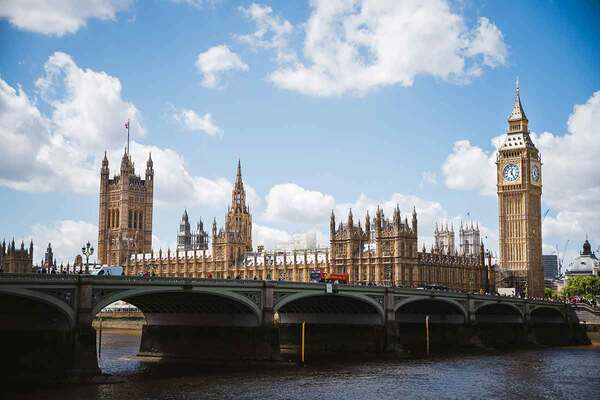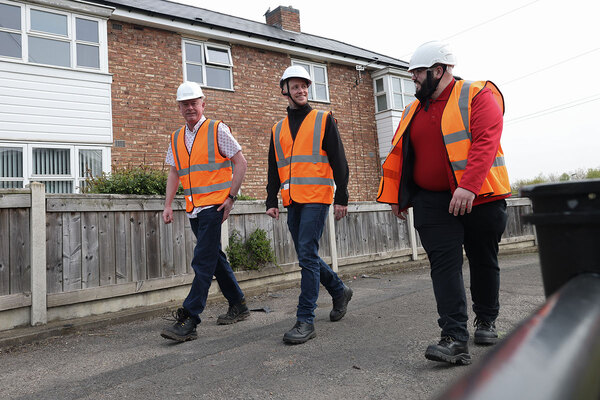You are viewing 1 of your 1 free articles
What has changed with Right to Buy?
Steve Partridge, head of the affordable housing consultancy at Savills, runs through the latest reforms to Right to Buy and the potential effects
The government has wasted no time in delivering on its election manifesto pledge to reform the Right to Buy council housing in England. It said it would “review increased Right to Buy discounts introduced in 2012” in order to “better protect” existing council homes.
The report it published alongside the Budget on 30 October showed it had done just that. Housing secretary of state, Angela Rayner, has maintained this progress and just published a Right to Buy Consultation on further potential reforms. These include changes to eligibility, further changes to discounts, proposals around the onward use of property post-sale and simplifying the receipts reinvestment process for councils.
The headline measure announced in October was a reduction in the discounts available for Right to Buy - which went further than many had thought in taking the maximum discounts all the way back to pre-2012 levels.
Research in 2023 by Savills for the Local Government Association (LGA) showed that annual Right to Buy sales in England were running at less than 3,000 homes a year pre-2012, as opposed to the 11,000 a year following the increase in discounts.
Allied to the reduction in discounts is a commitment by the government to significantly improve the flexibility with which Right to Buy receipts can be used by local authorities. This will allow 100% of receipts to be reinvested locally and removes the need to match fund receipts with borrowing or other forms of financing.
The changes came into force on 21 November, with maximum discounts reducing from £102,400-£136,400 to £16,000-£38,000. The government’s stated aims are to provide value for the taxpayer and not erode council housing stock, finding a better balance between access to low-cost homeownership for some and access to more social rent homes for others.
So, to what extent are its proposed changes to the Right to Buy policy likely to achieve this and what might be some key impacts?
“We found that relaxation of the ability to use all Right to Buy receipts for reinvestment… could increase replacement programmes by 41%”
The LGA research prepared by Savills found that the “reinvigoration” of the Right to Buy in 2012 was not only failing to meet its objectives, but in some key ways it was failing to deliver value for money for the public purse.
The discounts being offered were significantly increased by the ‘reinvigoration’ and the addition of successive inflationary uplifts to the discounts available. There was widespread evidence that these discounts were greater than would be needed to facilitate a sale to tenants, and were far in excess of the rents paid by the tenants buying their homes.
We estimated that between 2012 and 2022, tenants buying properties had enjoyed £6.7bn of discounts compared with no more than £4.7bn of rent paid based on average tenancy lengths.
The whole ‘one-for-one’ replacement process was in disrepute, with fewer than half the Right to Buy sales since 2012 having been replaced by the programme, and a forecast 43% replacement rate for the next 10 years if trends continued. The Byzantine one-for-one rules and a lack of flexibility in reinvestment had led to a system that was not working, despite the introduction of some recent changes.
The absence of a regional approach to discounts has been leading to disproportionate impacts on certain authorities in certain areas, with forecast sales rates to 2030 varying between 1.5% in London and nearly 6% in the East Midlands.
We found that relaxation of the ability to use all Right to Buy receipts for reinvestment, rather than having to pay a share to the government every year, could increase replacement programmes by 41%. This was recognised by the government in 2022 when, after years of lobbying, the ability to retain 100% of receipts was allowed.
The proposals announced by the government are almost all in line with where local authorities wanted to see change.
Reducing discounts to pre-2012 cash levels, combined with the increase in values since 2012, is likely to reduce sales rates to below 2011-12 levels (which were around 2,600). Government officials have estimated 1,700 annual sales – or around a quarter of the likely sales in 2024-25 – which are affected by higher interest rates compared with 2012.
“There are extra restrictions on the Right to Buy for newly built homes, which should remove most doubts that councils might have about building homes only to see them sold off cheaply within a short period”
As expected, there has been a spike in applications up to 21 November, some of which may flow through into the early period of 2025-26. But generally speaking, local authorities should be preparing for much-reduced sales rates.
There are extra restrictions on the Right to Buy for newly built homes, which should remove most doubts that councils might have about building homes only to see them sold off cheaply within a short period.
Another welcome change is the extension of the so-called ‘cost floor’, which means a home cannot be sold for less than the capital invested in building or refurbishing it during the past 30 years (previously 15 years). This is irrespective of the level of discount that the tenant might qualify for.
However, the government does need to clarify whether there will be any restrictions on reinvestment and whether this must be reinvested in new homes. This is especially the case given that 100% of receipts will be retained going forward, and the consultation published on 20 November contains proposals which address this point.
While these measures support the aim of providing better taxpayer value for money, the government’s desire to prevent further erosion of council stock must still be met. This is where the changes in use of Right to Buy receipts by councils are crucial.
The government is providing greater flexibility so receipts can be used in conjunction with other funds and opportunities, such as regeneration projects. Our research found that in lower-value areas in the North and Midlands in particular, this should permit more replacement council homes to be built.
Whether this is enough to meet a need for replacements on a one-for-one basis remains to be seen. However, the combination of fewer homes being sold and receipts being retained in full for reinvestment should improve the net position significantly over the forthcoming period.
Steve Partridge, head of the affordable housing consultancy, Savills
Sign up for our daily newsletter
Already have an account? Click here to manage your newsletters













